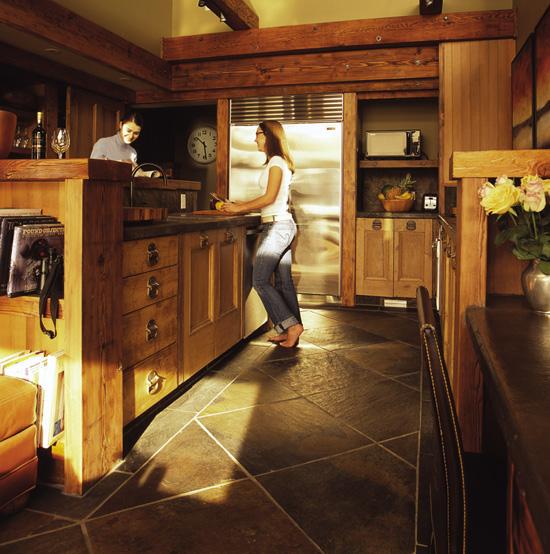Focus on: Underfloor Heat - October 2009
By Darius Helm
Everyone knows how it feels to stand barefoot on a tile floor—it’s cold, uncomfortable and, where possible, something to be avoided. That issue, among others, is what underfloor heat systems address, and they’re providing a solution that has been embraced heavily in Europe’s colder climes and is rapidly gaining traction in the U.S.
This process of delivering heat through floors—and, in fact, through walls and ceilings as well—is an industry with annual revenues in the U.S. in the $600 million to $800 million range, and prior to the housing slowdown was growing at a 20% to 30% rate.
The radiant heat industry is somewhat bipolar, with two distinct sets of products and two distinct functions. Hydronic systems, which have been around for much longer, pipe hot water through tiny plastic tubes, while electric systems deliver heat through insulated electric elements. The two systems are not only different in terms of heat generation, but also in terms of how they’re sold and where and how they’re installed. Radiant underfloor heat also serves two functions—comfort underfoot and energy efficiency—though the two functions can intersect under various scenarios.
On the commercial side, radiant heat is an efficient way to heat spaces that would otherwise be extremely costly both to heat up and keep hot, like large rooms with high ceilings, aircraft hangars, firehouses and industrial garages, where convective heat (like forced air systems) would constantly vent out or climb to the ceiling.
Residentially, hydronic systems are generally used for heating the entire home while electric systems most often go into bathrooms, and increasingly into kitchens and even living rooms. Hydronic radiant heat is generally installed during new home construction, with tubing running below or sometimes directly above the subfloor, or as retrofits for buildings that already have boilers are also common.
On the other hand, electric radiant heat, in the form of cables, mats or rolls, usually goes down at the same time as floorcoverings are installed. And though it’s most popular under ceramic and porcelain tile, the most current systems work for just about everything except solid hardwood.
Underfloor Heat and Ceramic Tile
So while the hydronic side of the business is far bigger—accounting for about 80% of the market, according to the Radiant Panel Association—it’s a business that really doesn’t intersect with the floorcovering industry. On the other hand, electric radiant heat—a $150 million industry, more or less—probably offers a lot of opportunities to the right kind of flooring dealer.
In fact, Daltile dealers sell electric underfloor heat systems from Nuheat, the largest player in the business, SunTouch, another big player, and Laticrete, the mortar and grout producer that came out with its own electric mat product nearly two years ago.
The fact is, there’s an entire demographic of people who might love the look and durability of ceramic tile and stone but they have one single objection and it stops them from ever voluntarily installing ceramic flooring—it’s so chilly underfoot. One has to wonder if that’s a market that is willing to pay $10 or so a square foot to warm up that tile.
That demographic has a regional element to it, since chilly ceramic floors are even less popular in chilly climates. Most of the success of ceramic and porcelain flooring is in the South and West, and by removing a barrier to its use, radiant heat solutions could help open up whole markets to ceramic tile.
Certainly many of those people who only have that single issue with ceramic tile would pay the price to solve it. In general radiant heat is a somewhat upscale item anyway. Its appeal is not quite as obvious for all the other floorcoverings, like laminate, engineered hardwood, vinyl or carpet. They don’t have the chilly presence of ceramic or stone, so a lot of the appeal would have to come from the extra coziness of a floor gently radiating heat, or perhaps from issues like indoor air quality or environmental considerations.
For the complete story on Underfloor Heat and those that supply it, see the October 2009 issue of Floor Focus Magazine.
Copyright 2009 Floor Focus
Related Topics:Daltile, Mohawk Industries, Coverings, Laticrete
